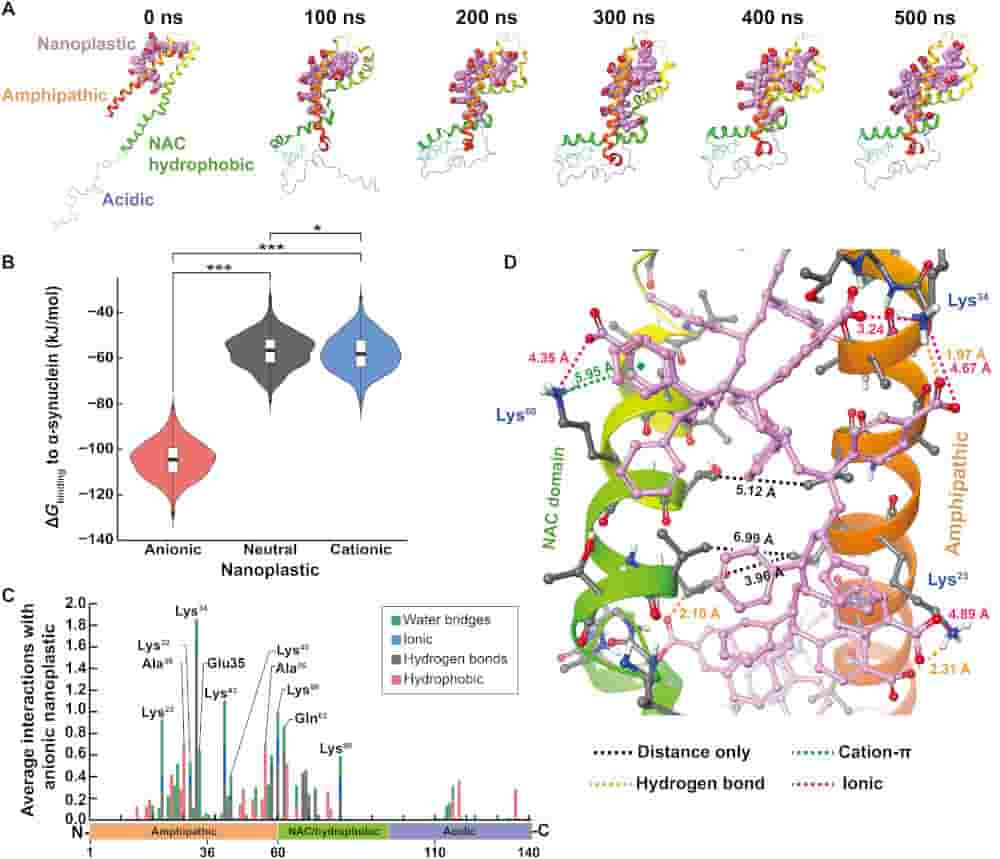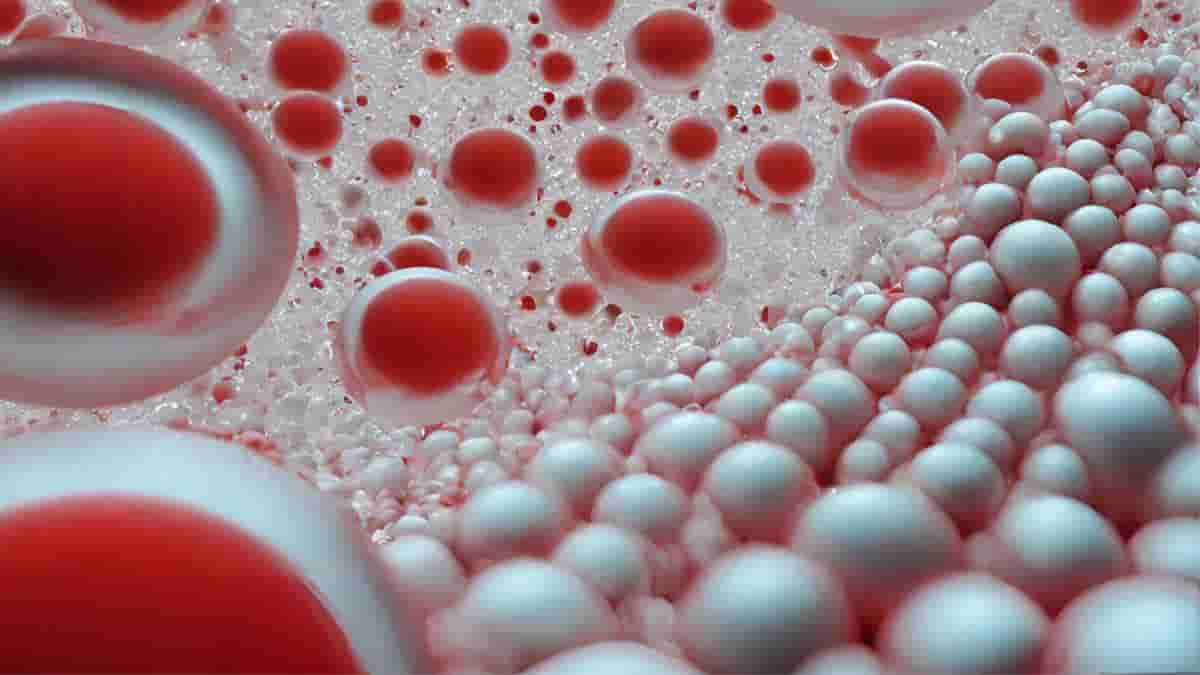A protein that is naturally found in the brain interacts with nanoplastics, causing changes that are linked to Parkinson’s disease and some types of dementia. In a recently published study led by Duke University, researchers report that the findings lay the groundwork for a new area of investigation, fueled by the timely impact of environmental factors on human biology.
“Parkinson’s disease has been called the fastest growing neurological disorder in the world. Numerous lines of data suggest environmental factors might play a prominent role in Parkinson’s disease, but such factors have for the most part not been identified,”
said principal investigator, Andrew West, Ph.D., professor in the Department of Pharmacology and Cancer Biology at Duke University School of Medicine.
Micro and Nanoplastics Risk

Credit: Sci. Adv. 9, eadi8716 (2023). DOI:10.1126/sciadv.adi8716
Plastics that have been improperly disposed of have been shown to break into very small pieces and accumulate in water and food supplies, and have been found in the blood of most adults according to a recent study.
“Our study suggests that the emergence of micro and nanoplastics in the environment might represent a new toxin challenge with respect to Parkinson’s disease risk and progression. This is especially concerning given the predicted increase in concentrations of these contaminants in our water and food supplies,”
West said.
West and colleagues from Duke’s Nicholas School of the Environment and Trinity College of Arts and Sciences discovered that nanoparticles of the plastic polystyrene, which is commonly found in single-use items such as disposable drinking cups and cutlery, attract the accumulation of the protein alpha-synuclein.
The tight bonds produced between the plastic and the protein within the location of the neuron where these accumulations are congregating, the lysosome, are the most surprising findings, according to West.
Three Parkinson’s Models
Plastic-protein accumulations were observed in three separate models used in the study: test tubes, cultured neurons, and mice models of Parkinson’s disease. West stated that questions remain concerning how such interactions may occur within humans and whether the type of plastic may have a role.
“While microplastic and nanoplastic contaminants are being closely evaluated for their potential impact in cancer and autoimmune diseases, the striking nature of the interactions we could observe in our models suggest a need for evaluating increasing nanoplastic contaminants on Parkinson’s disease and dementia risk and progression,”
West said.
“The technology needed to monitor nanoplastics is still at the earliest possible stages and not ready yet to answer all the questions we have,”
he said.
Hopefully, as scientists learn more about what these particles can do in our models, activities in this area will accelerate. We can protect ourselves if we know what to look for, without giving up all of the benefits we get from plastics every day.
The study was funded in part by The Michael J. Fox Foundation for Parkinson’s Research and the Aligning Science Across Parkinson’s initiative.
Abstract
Recent studies have identified increasing levels of nanoplastic pollution in the environment. Here, we find that anionic nanoplastic contaminants potently precipitate the formation and propagation of α-synuclein protein fibrils through a high-affinity interaction with the amphipathic and non-amyloid component (NAC) domains in α-synuclein. Nanoplastics can internalize in neurons through clathrin-dependent endocytosis, causing a mild lysosomal impairment that slows the degradation of aggregated α-synuclein. In mice, nanoplastics combine with α-synuclein fibrils to exacerbate the spread of α-synuclein pathology across interconnected vulnerable brain regions, including the strong induction of α-synuclein inclusions in dopaminergic neurons in the substantia nigra. These results highlight a potential link for further exploration between nanoplastic pollution and α-synuclein aggregation associated with Parkinson’s disease and related dementias.
Reference:
- Zhiyong Liu et al. Anionic nanoplastic contaminants promote Parkinson’s disease–associated α-synuclein aggregation. Sci. Adv. 9, eadi8716 (2023). DOI:10.1126/sciadv.adi8716
